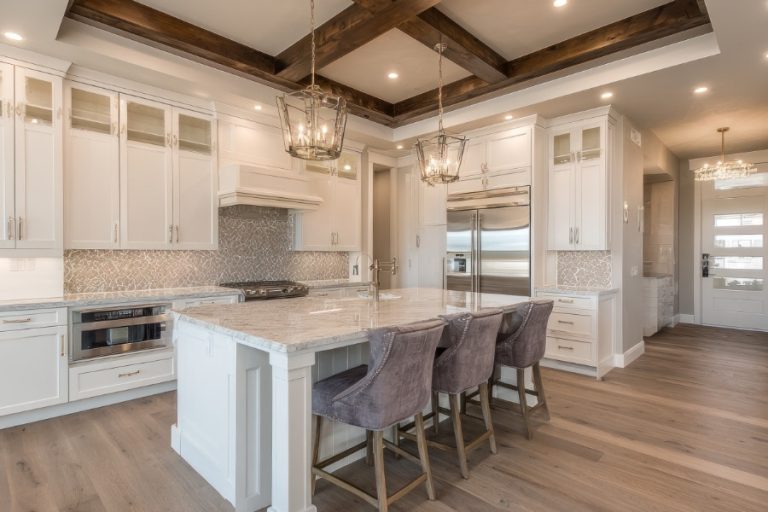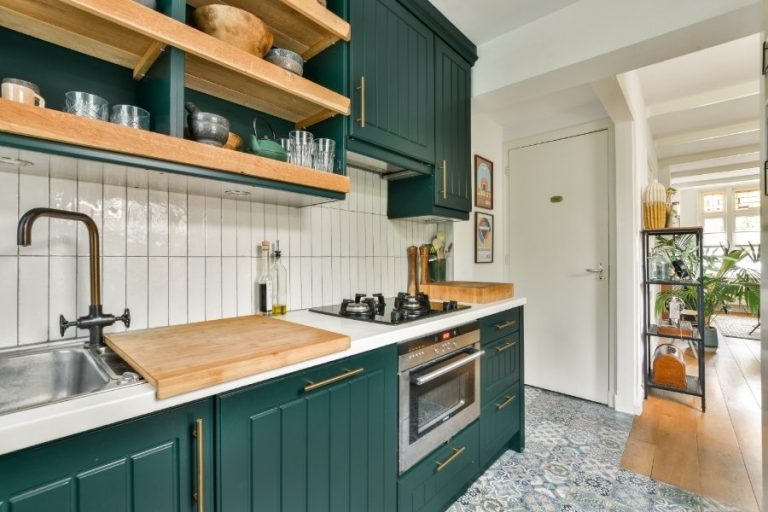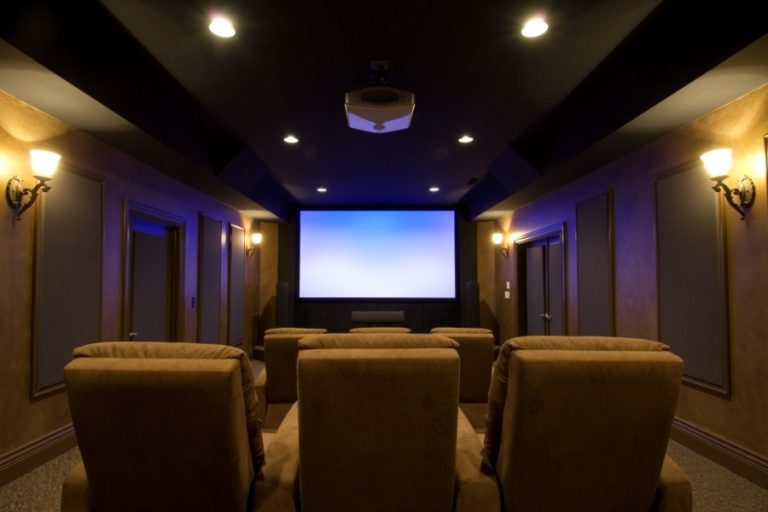Designing the Perfect Custom Kitchen
A custom home is a blank canvas — and no room tells your story more completely than the kitchen. It’s where mornings begin, friends gather, and memories simmer alongside Sunday dinners. Designing this space is both a technical challenge and a creative privilege: equal parts blueprint and emotion.
When you build a custom kitchen, you’re not just choosing countertops and cabinets. You’re shaping how you’ll live — how your family moves, eats, and connects every day.
Planning With Purpose
Before selecting finishes or fixtures, start with a question: how do you actually use your kitchen? A well-designed kitchen blends elegance and efficiency, allowing for easy movement between the main work zones — the stove, the sink, and the refrigerator — while also giving you room to breathe, gather, and enjoy.
For avid cooks, that might mean extra prep counters, deep drawers, and professional-grade ranges. For entertainers, it could be generous seating around an island, discreet beverage stations, or lighting that transitions from brunch to dinner effortlessly.
The goal is harmony: a layout that fits your rhythm and never feels forced.
Defining Your Signature Style
Every homeowner has a visual language. The kitchen is where that style becomes tactile — in surfaces, textures, and light.
To uncover your design DNA, look for patterns in what draws your eye. Are you captivated by sleek, minimalist lines and soft neutrals? Or do you lean toward natural wood grains, open shelving, and the timeless comfort of a farmhouse kitchen?
Collect images, materials, and color palettes that resonate with you. Over time, a narrative will emerge — one that blends aspiration with authenticity.
The Core Design Elements
A luxury kitchen balances utility and artistry. The most enduring designs rely on three fundamental pillars: layout, storage, and lighting.
Layout
The flow of a kitchen defines how it feels. Whether you prefer a galley kitchen for efficiency or an open layout that encourages conversation, your plan should support comfort and movement. Consider sightlines to adjacent rooms, proximity to dining spaces, and how traffic will naturally move through the area.
Storage
In a truly custom kitchen, storage isn’t an afterthought — it’s invisible design. Deep drawers for cookware, integrated pull-outs for spices, and concealed pantries make daily life smoother and more serene. A balance of open shelving and closed cabinetry can showcase heirloom pieces while maintaining order.
Lighting
Light shapes mood. Blend three layers: ambient light for warmth, task lighting for function, and accent lighting for drama. Use dimmers and zones so you can shift from lively gatherings to quiet evenings seamlessly.
Material and Color: The Heart of the Aesthetic
Choosing materials is where architecture meets personality. Countertops in marble, quartzite, or butcher block each tell a different story. Cabinetry might feature natural wood finishes or matte lacquers for a sleek, modern look. Floors should feel timeless and tactile — oak, limestone, or patterned tile.
Your color palette sets the emotional tone. Crisp whites and muted grays evoke calm precision. Deep blues or warm neutrals bring comfort and sophistication. Whatever you choose, consistency across surfaces creates balance and visual flow.
Texture matters as much as color — from the smoothness of polished stone to the subtle grain of rift-cut oak. The right mix adds depth and dimension.
Modern Luxury: Trends That Endure
Open-concept kitchens continue to thrive for their sociable flow, but the newest interpretation favors subtle definition — islands that anchor space, ceiling beams that delineate zones, or glass partitions that preserve openness without sacrificing intimacy.
Smart technology is becoming invisible design: voice-controlled lighting, refrigerators that manage grocery lists, and hidden charging drawers that eliminate clutter. These features add comfort without competing with craftsmanship.
Sustainability has also entered the luxury conversation. Eco-conscious materials like reclaimed wood, low-VOC finishes, and energy-efficient appliances prove that design integrity and environmental responsibility can coexist beautifully.
Balancing Beauty and Function
The finest kitchens don’t chase trends; they transcend them. Work with professionals who understand both the technical and emotional sides of design — from load-bearing considerations to how sunlight moves across your countertops at 3 p.m.
Communicate openly with your designer or builder about how you live. Do you prefer casual breakfasts at the island or formal dinners under pendant light? Do you crave minimalism, or are you happiest surrounded by texture and warmth?
A great kitchen doesn’t just photograph well — it feels inevitable, as if it could exist no other way.
Crafting a Space That Lasts
A kitchen should age gracefully. Choose materials that patina beautifully and layouts that adapt as your life evolves. Avoid design gimmicks that age quickly. Instead, invest in the details that endure: solid craftsmanship, balanced proportions, and finishes that invite touch.
At Palatial Homes Design, we see the kitchen as the true heart of the home — where design meets daily life, and every inch matters. A well-designed kitchen isn’t about extravagance; it’s about alignment. Form, function, and feeling, all working together.
That’s when a kitchen becomes more than a room — it becomes a reflection of you.







